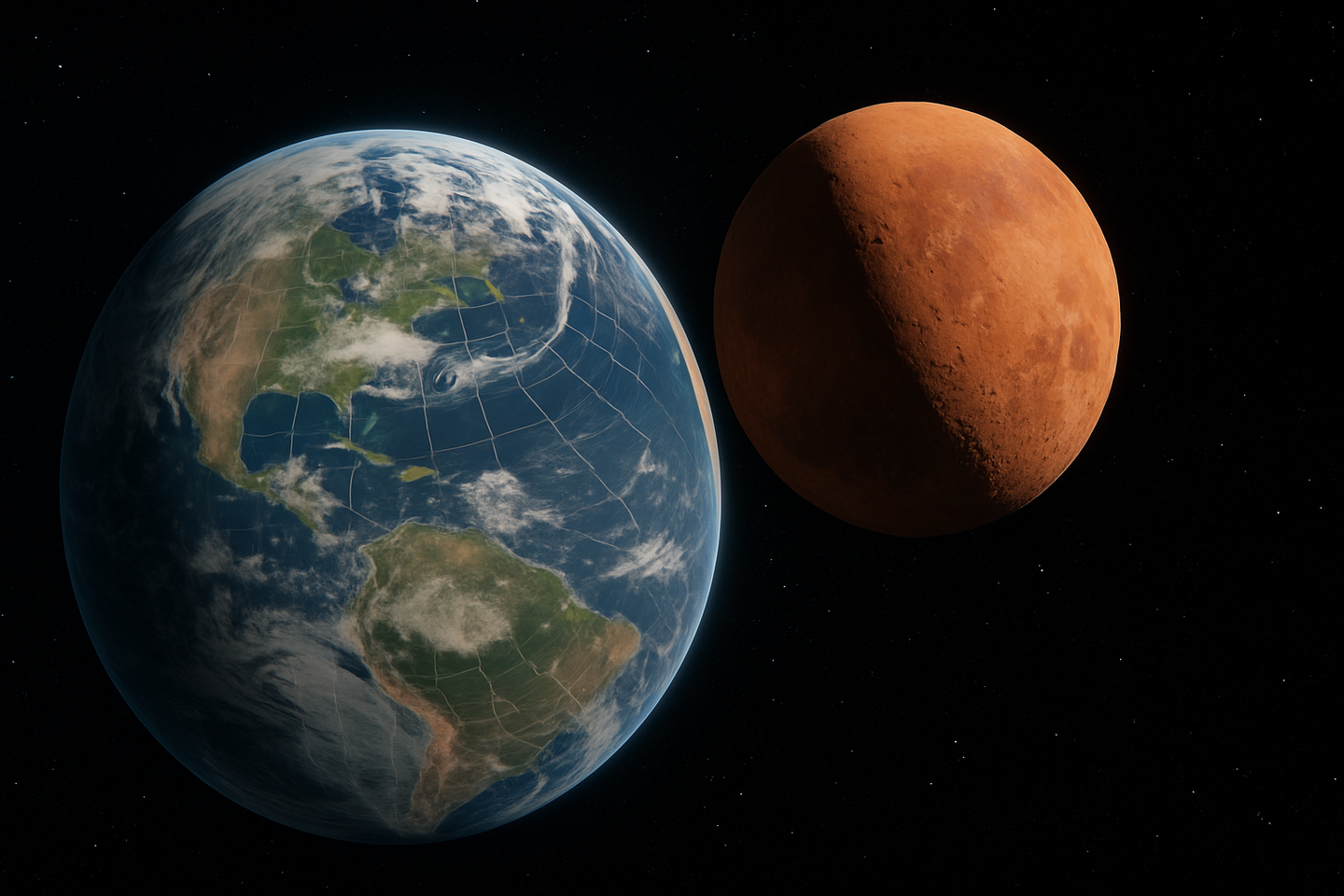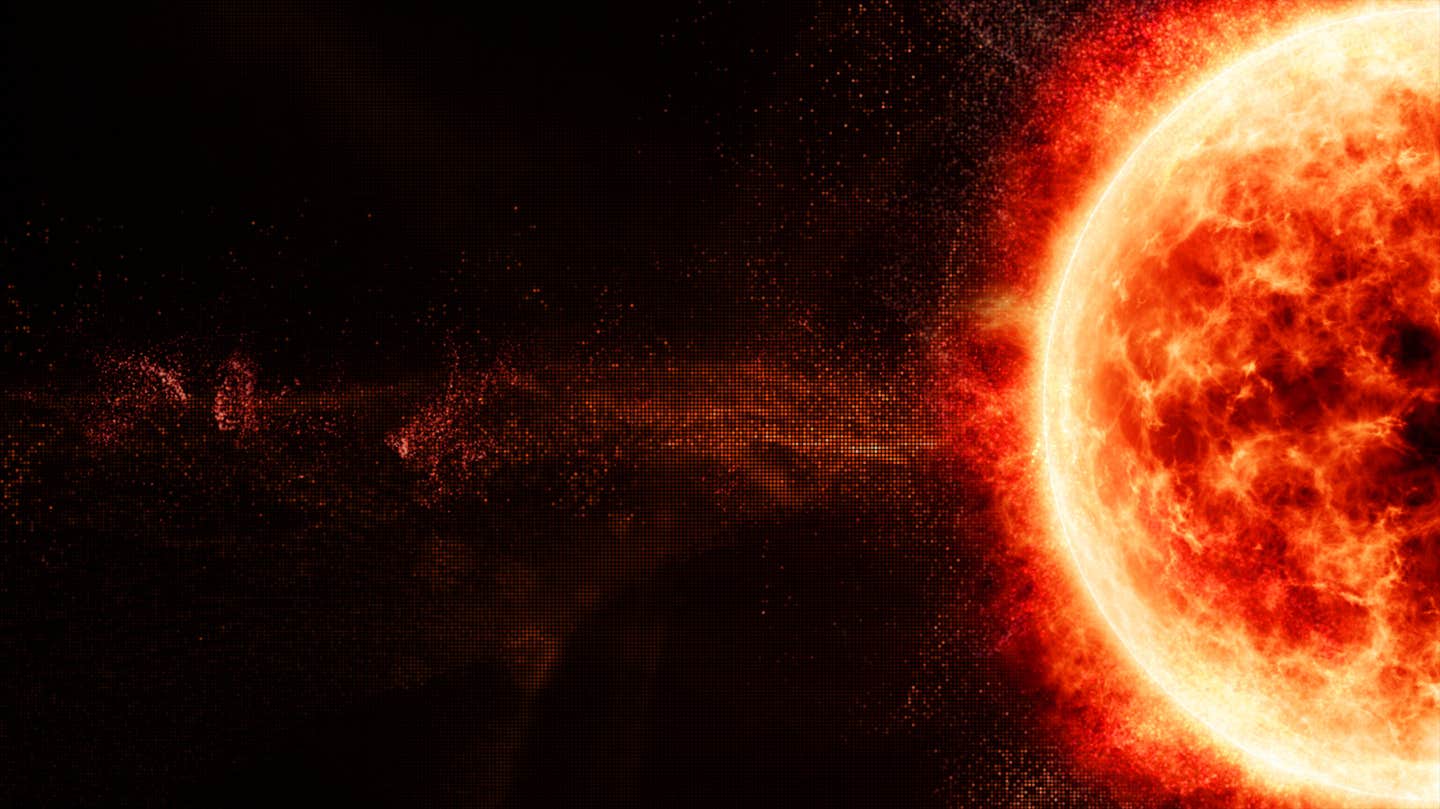Scientists reveal Theia’s origins before it struck early Earth and formed the Moon
New isotopic evidence suggests Theia formed in the inner Solar System and left a lasting mark on Earth and the Moon.

 Edited By: Joshua Shavit
Edited By: Joshua Shavit

New isotope measurements reveal where Theia formed and how its impact shaped Earth and the Moon. (CREDIT: AI-generated / The Brighter Side of News)
The story of how the Moon came to be has always carried a touch of mystery. Picture the young Solar System as a restless place where new worlds grew from swirling gas, dust, and rock. In that chaotic setting, a Mars-sized body called Theia likely struck the early Earth. The collision reshaped our planet and scattered debris into space. That debris later gathered into the Moon that lights your night sky.
Scientists agree on the broad outline of that event, but the details remain unsettled. How large Theia was, what it was made of, and where it formed are still open questions. Theia no longer exists as a separate body, so researchers hunt for its traces in the only places left to look: Earth and the Moon.
Why Isotopes Hold the Clues
Every rock carries a chemical memory of the place it formed. That memory comes partly from isotopes, which are versions of an element with different masses. In the infant Solar System, isotopes were not mixed evenly. Material closer to the Sun held a slightly different blend than material farther out.
Because of that, comparing isotopes from planets and meteorites lets scientists trace where their building blocks once lived. Meteorites from the inner Solar System are called noncarbonaceous, or NC, and those from farther out are carbonaceous, or CC. Earth and the Moon should fall somewhere in this landscape. If the Moon formed mostly from Theia, its rocks should show some sign of Theia’s unique isotopic fingerprint.
Earlier studies hinted that Earth and the Moon look almost identical in many isotopes. Oxygen, calcium, titanium, chromium, zirconium, and tungsten all match so closely that it seems the rocks could have come from the same world. That puzzled researchers because Theia and Earth should not have formed in exactly the same spot. The lack of differences raised a question: was Theia made of the same stuff as Earth, or did the impact mix the two bodies so thoroughly that their separate identities vanished?
A New Look at Iron
To push this mystery further, an international team examined iron isotopes with far greater precision than before. They analyzed 15 Earth rocks, six Apollo samples, and 20 NC meteorites. Using a high-accuracy technique called multicollector mass spectrometry, they measured small deviations in iron’s isotopic ratios.
Earth’s samples fell neatly into one group, representing the planet’s mantle. Many meteorites, especially enstatite chondrites, had different values. That showed Earth’s iron could not come solely from those meteorites.
The Moon samples told a more complex story. Some had been altered by cosmic rays, which can nudge isotopes in predictable directions. But three samples showed little sign of that damage and matched Earth’s iron signature within the uncertainty of the measurements. Once again, Earth and the Moon appeared almost the same.
Breaking the Deadlock With More Elements
The team then expanded the search to other elements, including zirconium, molybdenum, and chromium. These elements behave differently during planetary growth. Zirconium stays in the mantle and records a planet’s full history. Iron and molybdenum partially sink to the core, so their mantle signatures reflect only the final stages of growth. Ruthenium, a highly siderophile metal, usually arrives after the core has formed.
That difference matters because the Moon-forming collision happened late in Earth’s formation. Any siderophile elements that appear in Earth’s mantle after that point were likely delivered by Theia. Comparing how lithophile and siderophile isotopes differ allows researchers to tease apart the compositions of proto-Earth, Theia, and the later material that fell to Earth after the impact.
Testing the Collision Scenarios
The team modeled three possible sizes for Theia: a small body, a classic ten-percent-of-Earth mass impactor, and a giant impactor half as massive as Earth itself. For each size, they calculated how much iron, zirconium, and molybdenum Theia would have needed to supply to match the mantle measurements we see today.
They also considered the late veneer, the final drizzle of material Earth collected after its core stopped growing. About sixteen percent of the molybdenum in today’s mantle came from that late stage. Once corrected for it, Earth’s molybdenum signature shifted, helping narrow down the possible mixtures that produced the present mantle.
Pinpointing Theia’s Birthplace
The calculations revealed that proto-Earth and Theia likely shared a similar background. Both appear to have formed mostly from NC material, the type linked to the inner Solar System. But they were not identical siblings. Theia seems to have carried more material produced by slow neutron capture, known as s-process isotopes. That suggests Theia formed even closer to the Sun than Earth did.
Some meteorites preserve hints of this trend. Among NC meteorites, isotopic differences often line up along smooth patterns that reflect mixtures of two components, one of which has never been sampled directly. Earth’s mantle sits slightly off these trends, hinting that it contains contributions from a missing inner Solar System ingredient. The most consistent explanation is that Theia brought some of that exotic material during the impact.
The team also explored the reverse: what Theia must have looked like if proto-Earth resembled various types of meteorites. When proto-Earth was modeled as carbonaceous, Theia became too strange to match any known material. But when proto-Earth was modeled as NC or enstatite-like, Theia’s composition became much more plausible. In that scenario, both bodies were neighbors in the early Solar System, shaped by similar processes but not perfectly alike.
“Our results show that Earth and Theia were likely born in the same region,” said Timo Hopp of the Max Planck Institute for Solar System Research. “Theia probably formed slightly closer to the Sun.”
What the Moon Still Tells Us
The Moon’s composition may now be understood as the blended afterglow of two nearby worlds. The impact mixed their mantles, and later material slightly altered Earth’s mantle but not the Moon’s. That is why Earth carries subtle isotopic differences in molybdenum and ruthenium while the Moon does not.
According to Thorsten Kleine of the Max Planck Institute, “The composition of a body records its full formation history, including its birthplace.” The new findings imply that Theia’s birthplace lay in a region of the inner Solar System richer in certain isotopes than the material that built most of Earth.
The Moon, then, is not just a silent witness of a single impact. It is a record of how the inner Solar System once mixed, scattered, and reassembled its building blocks in ways still written in stone.
Research findings are available online in the journal Science.
Related Stories
- How a planetary crash with Theia brought water and life to Earth
- Scientists discover how extreme heat forged the world’s continents
- 4.5 billion-year-old proto-Earth fragments found in Earth’s mantle
Like these kind of feel good stories? Get The Brighter Side of News' newsletter.
Joseph Shavit
Science News Writer, Editor-At-Large and Publisher
Joseph Shavit, based in Los Angeles, is a seasoned science journalist, editor and co-founder of The Brighter Side of News, where he transforms complex discoveries into clear, engaging stories for general readers. With experience at major media groups like Times Mirror and Tribune, he writes with both authority and curiosity. His work spans astronomy, physics, quantum mechanics, climate change, artificial intelligence, health, and medicine. Known for linking breakthroughs to real-world markets, he highlights how research transitions into products and industries that shape daily life.



